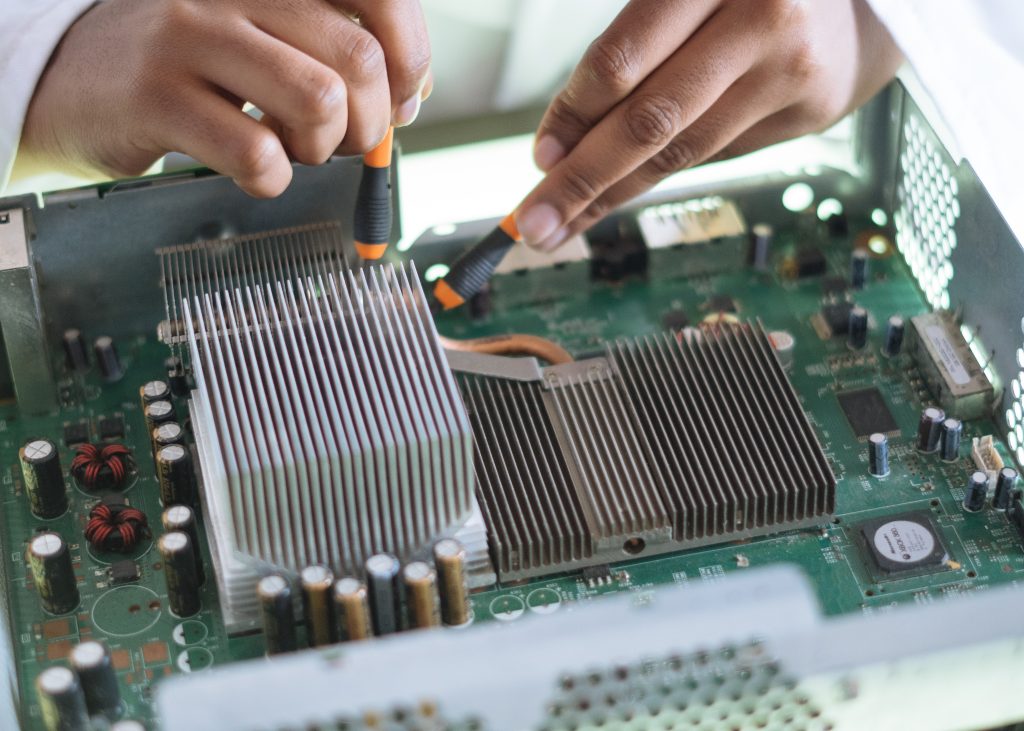In today’s fast-paced technology landscape, upgrading your computer’s components can be intimidating. One of the most common questions during a build or upgrade is whether your old graphics card will work with a new motherboard and CPU. The answer to this question is not as simple as a yes or no. It depends on various factors, such as compatibility, power requirements, etc.
In this article, we will dive deeply into the subject to help you determine whether your old graphics card will work with your new motherboard and CPU and what you need to consider before upgrading.
Can Any Motherboard Support Any GPU?
No motherboard can support any GPU. Compatibility is crucial when using a GPU on a motherboard. The GPU’s interface must be compatible with the motherboard’s interface. For example, if the GPU uses a PCI-Express interface and the motherboard only has a PCI interface, the GPU will not be compatible. Additionally, the version of the PCI-Express interface must be the same on both the GPU and the motherboard. For example, a PCI-Express 4.0 GPU will not work on a motherboard that only supports PCI-Express 2.0.
How to determine if your old graphics card is compatible
To determine if your old graphics card is compatible with your new motherboard and CPU, you will need to consider the following factors:
- Interface: Make sure that the interface on your old graphics card is compatible with the interface on your new motherboard. For example, the card will not be compatible if your old graphics card uses a PCI-Express interface and your new motherboard only has a PCI interface.
- Power requirements: Check the power requirements of both your old graphics card and your new motherboard to ensure your power supply can accommodate the additional power needs.
- Form factor: Check the form factor of your old graphics card and ensure it will fit into your new motherboard.
- Drivers: Make sure that the drivers for your old graphics card are compatible with your new operating system.
- BIOS/UEFI compatibility: Ensure the motherboard’s BIOS/UEFI is compatible with the GPU. If the GPU is too old, the motherboard may not recognize it.
As someone new, I know it’s tough to choose PC parts that are compatible. In this case, you can virtually build a list of compatible PC parts using PC-building websites like PC Builder and BuildMyPC.
Can you use an old GPU with the new Motherboard and CPU?
You cannot use an older GPU with a new motherboard if it does not use the PCIe interface. Any graphics card can operate on an advanced motherboard if there is a slot for it and compatible drivers can be installed. For some very old or obscure GPUs that do not have Windows 10 drivers, you may need to use a virtual machine or switch to an older OS, but it should still be possible.
Modern motherboards may also not function with older GPUs due to BIOS issues. In the BIOS, if you have disabled legacy boot mode, the motherboard may not function. However, new motherboards should have UEFI and Legacy boot enabled by default (if you have set boot to UEFI mode only and cannot get an old GPU to work, resetting the CMOS should cure the issue).
A few experimental GPUs (like Intel’s Project Larrabee) don’t have drivers, and platform-locked GPUs (like Intel’s DG1) only work with specific motherboard models. Still, most PCIe GPUs from Nvidia, ATI/AMD, and Mellanox should work.
Just like that, when you use an old GPU with a new CPU, the GPU’s compatibility with the motherboard is an essential factor to consider.
Most modern motherboards have a PCIe slot that can accommodate a GPU, but the specific version of the PCIe slot (such as PCIe 3.0 or 4.0) can vary depending on the motherboard and the CPU. It is essential to check the specifications of both the GPU and the motherboard to ensure compatibility.
Another essential factor to consider is the power supply. As specified in the GPU’s specifications, a GPU requires a certain amount of power to function. It is essential to ensure the power supply can provide enough power to the GPU. The power supply should have enough wattage and the correct connectors to power the GPU.
Another thing to consider is the performance of the GPU. The CPU’s capabilities may limit the GPU’s performance. If the CPU is not powerful enough to handle the GPU’s workload, the GPU will not perform at its full potential.
Finally, you must ensure that the GPU driver is compatible with the Operating system. If the GPU is too old, it may need driver support for the latest OS version you are running on your PC.
The importance of drivers
Drivers are software that allows your operating system to communicate with your computer’s hardware. They act as a bridge between the operating system and the hardware, allowing the system to recognize and use its features and capabilities.
The importance of drivers lies in their ability to ensure that the hardware and software of your computer are working together seamlessly. Without the proper drivers, the system may not recognize your hardware or be unable to use all of its features and capabilities.
For example, suppose you have a new graphics card and haven’t installed the correct drivers. In that case, your operating system may be unable to recognize the card and use its gaming or video playback capabilities.
Additionally, if you have an outdated version of drivers, the performance of your hardware may be affected, or it may not function correctly. This can lead to system crashes, blue screens, and other issues.
That’s why keeping your drivers up-to-date is essential. You can check for new updates from the manufacturer’s website or use software like Device Manager (on Windows) or System Update (on Linux) to check and update your drivers.
Tips for finding drivers for older hardware
Finding drivers for older hardware can be a bit trickier than finding drivers for newer hardware, but there are a few things you can do to help you find the right drivers for your system:
- Check the manufacturer’s website: The first place to check for drivers is the manufacturer’s website. Most manufacturers provide drivers for their products, even for older hardware. Search for your specific hardware and look for the “Support” or “Downloads” section of the website.
- Check the operating system’s website: If you need help finding drivers on the manufacturer’s website, check the website of the operating system you are using. Windows and Linux both have a database of drivers available for download.
- Use a driver update software: Several driver update software available online can help you find and install the correct drivers for your system. This software can scan your system, tell you which drivers are missing or outdated, and help you download and install the proper drivers.
- Check forums or community websites: If you still need help finding the proper drivers, check forums or community websites for help. Many people in these communities are experts in older hardware and may be able to point you in the right direction.
- Contact the manufacturer: If you have tried all the above options and still need help finding the correct drivers, contact the manufacturer directly. They can provide you with the drivers or direct you to where you can find them.
If the hardware is too old, the manufacturer may not have the drivers available, or the operating system may not support the hardware. In that case, consider upgrading to newer hardware.
Conclusion
Using an old graphics card with a new motherboard and CPU is possible, but it is essential to consider some factors. Research and double-check that the GPU is compatible with your setup and that you have the correct drivers installed. Additionally, remember that an older graphics card may need help to keep up with modern games. If this is a concern, investing in a newer model that can deliver better performance may be worth investing in. By following these tips, you can ensure your old graphics card will work with your new system.
FAQs
Q: Can I use my old graphics card with a new motherboard and CPU?
A: It is possible to use an old graphics card with a new motherboard and CPU, but it depends on compatibility, power requirements, and other factors.
Q: How can I check if my old graphics card is compatible with my new motherboard and CPU?
A: To check compatibility, you can check the interface, power requirements, form factor, and BIOS/UEFI compatibility of the GPU with the new motherboard and CPU. You can also check the GPU’s compatibility with the CPU by checking the CPU’s integrated graphics compatibility list.
Q: Will my old graphics card work with a new motherboard and CPU if they have different interfaces?
A: No, if the GPU and motherboard have different interfaces, the GPU will not be compatible with the motherboard.
Q: Are there any risks of using an old graphics card with a new motherboard and CPU? A: Yes, there are risks, such as compatibility issues, power requirements, overheating, and driver compatibility. Additionally, the performance may not be as good as it could be with a newer GPU that is designed to work with the newer motherboard and CPU.





